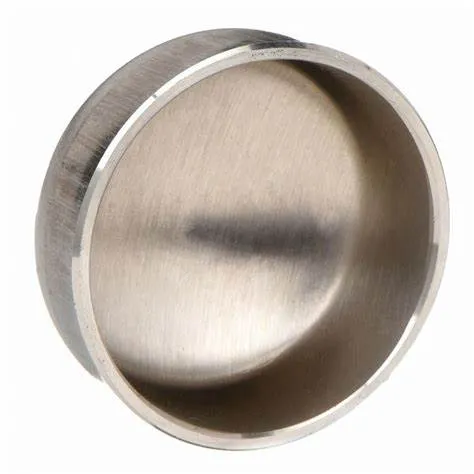-
Cangzhou Yulong Steel Co., Ltd.
-
Phone:
+86 13303177267 -
Email:
admin@ylsteelfittings.com
- English
- Arabic
- Italian
- Spanish
- Portuguese
- German
- kazakh
- Persian
- Greek
- French
- Russian
- Polish
- Thai
- Indonesian
- Vietnamese
- Zulu
- Korean
- Uzbek
- Hindi
- Serbian
- Malay
- Ukrainian
- Gujarati
- Haitian Creole
- hausa
- hawaiian
- Hebrew
- Miao
- Hungarian
- Icelandic
- igbo
- irish
- Japanese
- Javanese
- Kannada
- Khmer
- Rwandese
- Afrikaans
- Albanian
- Amharic
- Armenian
- Azerbaijani
- Basque
- Belarusian
- Bengali
- Bosnian
- Bulgarian
- Catalan
- Cebuano
- China
- China (Taiwan)
- Corsican
- Croatian
- Czech
- Danish
- Esperanto
- Estonian
- Finnish
- Frisian
- Galician
- Georgian
- Kurdish
- Kyrgyz
- Lao
- Latin
- Latvian
- Lithuanian
- Luxembourgish
- Macedonian
- Malgashi
- Malayalam
- Maltese
- Maori
- Marathi
- Mongolian
- Myanmar
- Nepali
- Norwegian
- Norwegian
- Occitan
- Pashto
- Dutch
- Punjabi
- Romanian
- Samoan
- Scottish Gaelic
- Sesotho
- Shona
- Sindhi
- Sinhala
- Slovak
- Slovenian
- Somali
- Sundanese
- Swahili
- Swedish
- Tagalog
- Tajik
- Tamil
- Tatar
- Telugu
- Turkish
- Turkmen
- Urdu
- Uighur
- Welsh
- Bantu
- Yiddish
- Yoruba

Dec . 07, 2024 11:45 Back to list
ansi cl150
Understanding ANSI CL150 A Deep Dive into Standards and Applications
In the field of industrial instrumentation and automation, maintaining high safety and reliability standards is crucial. One such standard that plays an essential role in ensuring the quality and consistency of products is ANSI CL150. This article seeks to provide a comprehensive overview of ANSI CL150, its significance, applications, and implications for industries that rely on it.
What is ANSI CL150?
ANSI CL150 refers to a classification developed by the American National Standards Institute (ANSI) that specifies the pressure-temperature ratings for flanges and fittings. These components are critical in piping systems across various industries, including oil and gas, chemical processing, and water treatment. ANSI CL150 standards dictate how flanges are designed and the parameters they must meet regarding pressure and temperature ratings.
The Importance of ANSI CL150
1. Safety One of the primary reasons for adhering to ANSI CL150 standards is to ensure safety in operations. High-pressure systems can lead to catastrophic failures if components do not meet specified performance criteria. By following ANSI CL150, companies minimize these risks, thus protecting their employees, the environment, and their assets.
2. Interoperability ANSI CL150 provides a common framework for manufacturers, engineers, and contractors. When all parties utilize the same standards, it facilitates interoperability between different systems and components, leading to smoother projects and minimizing the risks associated with compatibility issues.
3. Regulatory Compliance Many industries face strict regulations concerning operational safety and environmental impact. By conforming to ANSI CL150, companies can demonstrate compliance with regulatory standards, thereby avoiding legal repercussions and potential penalties.
Applications of ANSI CL150
ANSI CL150 standards are widely applicable across various sectors. Some of the notable applications include
ansi cl150

- Oil and Gas The upstream, midstream, and downstream segments of the oil and gas industry rely heavily on ANSI CL150-compliant flanges to ensure safe transportation and processing of hydrocarbons. High-pressure pipelines and processing equipment must adhere to these standards to manage the extreme conditions typical in this industry.
- Chemical Processing In chemical plants, processes often involve dangerous and corrosive substances. ANSI CL150-rated components help manage these materials safely and efficiently, reducing the likelihood of leaks or ruptures.
- Water Treatment Municipal water systems and wastewater treatment facilities utilize ANSI CL150 standards to maintain safe and efficient operations. Flanges and fittings that comply with these standards are crucial in ensuring that water is treated effectively and reaches consumers without contamination.
Considerations When Implementing ANSI CL150 Standards
While the benefits of conforming to ANSI CL150 are significant, several considerations must be prioritized
1. Material Selection The materials used in manufacturing flanges and fittings must be suitable for the specific applications and the operating environment. Different materials provide varying levels of resistance to corrosion, temperature variations, and pressure changes.
2. Installation Practices Proper installation practices are as crucial as the components themselves. Engineers must certify that all components are installed correctly to comply with ANSI CL150 standards and ensure their operational integrity.
3. Ongoing Maintenance Regular inspections and maintenance of ANSI CL150-compliant systems are vital. This preventive approach can identify potential issues early, averting equipment failures and maintaining safety and operational efficiency.
Conclusion
ANSI CL150 plays an integral role in the safety and functionality of various piping systems across diverse industries. By adhering to these standards, organizations can enhance safety, ensure regulatory compliance, and promote interoperability among systems. Understanding the implications and applications of ANSI CL150 not only prepares companies for the challenges posed by their respective industries but also reinforces the commitment to operational excellence and safety. As technology and industry standards continue to evolve, staying informed and compliant with ANSI CL150 will remain essential for any organization operating within high-pressure environments.
Latest news
-
ANSI 150P SS304 SO FLANGE
NewsFeb.14,2025
-
ASTM A333GR6 STEEL PIPE
NewsJan.20,2025
-
ANSI B16.5 WELDING NECK FLANGE
NewsJan.15,2026
-
ANSI B16.5 SLIP-ON FLANGE
NewsApr.19,2024
-
SABS 1123 FLANGE
NewsJan.15,2025
-
DIN86044 PLATE FLANGE
NewsApr.19,2024
-
DIN2527 BLIND FLANGE
NewsApr.12,2024
-
JIS B2311 Butt-Welding Fittings LR/SR 45°/90° /180°Seamless/Weld
NewsApr.23,2024











